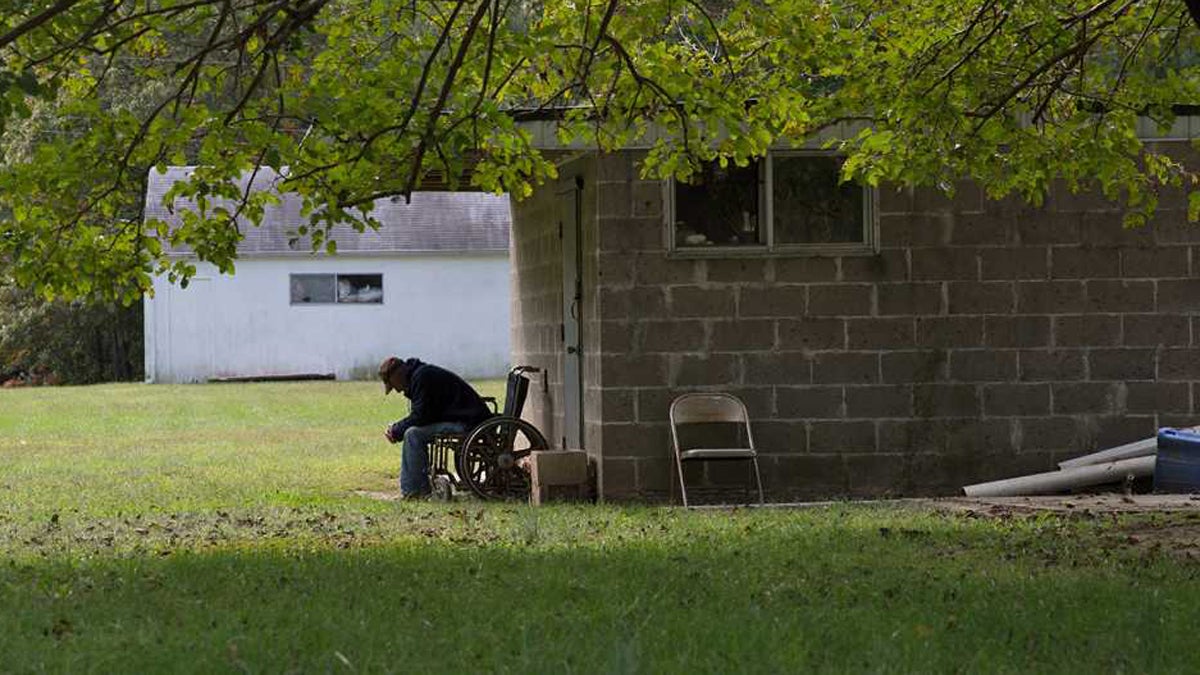N.J. homes for the mentally ill, homeless likened to Sixties-era psychiatric hospitals

A resident sits outside of R & M guest home, a boarding home in Chesilhurst, New Jersey. (Lindsay Lazarski/WHYY)
Thousands of people with mental illness today are homeless or languish in prisons. And thousands more live in thinly funded “quasi-institutions” that have sprung up to house those who can’t find or afford a more appropriate setting.
Advocates agree, boarding-home conditions are particularly problematic in the Garden State, which has more than a thousand such places.
One such residential health-care facility, Dover Woods, located in Tom’s River, near the very busy intersection of Routes 70 and 9, looks more like a dumpy, two-story office building. Windows are taped up, covered with plywood. The yard is overgrown, and strewn with litter, cigarette butts, and empty beer bottles.
Robert Davison knows the place well. He heads the mental health association of Essex County. A year ago he checked himself into Dover Woods under a fake name, to experience conditions first hand.
“I saw patients fighting over cigarettes, I was solicited by a woman who was profoundly psychotic for sex, prostitution,” said Davison of his three-day stint on the inside. “It was loud, many people were hallucinating, screaming, a lot of substance abuse going on. it can only be described as pandemonium.”
On this visit, Davison stayed outside as I ventured into the facility’s lobby. He figured he would be recognized after his stay at the place last year.
Inside, the smell of urine was overwhelming. A man standing by the door had wet his pants and was talking to himself, nobody was assisting him. Another man was speaking into a pay phone, but he hadn’t dialed a number. Residents sat in the lobby, staring into space, or at a television blaring day-time soaps.
The facility is state-licensed for 251 people; residents typically share a small room with one or two others. There was no staff in sight, nobody asked why I was there, or who I was.
Only two boarding home operators agreed to comment for this report – but they didn’t their names used.
They tell a different side of the story — about endless hours spent trying to serve this very difficult population, and keep people stable. They say they get calls around the clock, when residents experience problems, or are doing inappropriate things.
“Who gets a call on Thanksgiving when one of our residents is walking around the neighborhood without clothes?” asked one of them. “I do. My phone rings all the time.”
They said it can cost dog owners twice as much per day to put Fido in a kennel as what boarding home operators get to provide shelter, three meals and some medical care for a person.
Click through for the long read: This is an excerpt from Maiken Scott’s full story.
WHYY is your source for fact-based, in-depth journalism and information. As a nonprofit organization, we rely on financial support from readers like you. Please give today.


